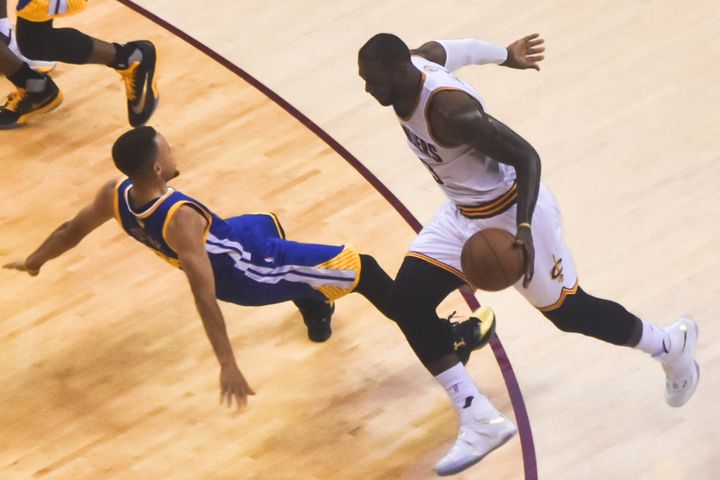Steph Curry injured his previously operated on ankle, again. Here is what he can do—and what you can do—when recurrent ankle injuries occur.

Three ligaments on the outside of the ankle, and one on the inside, control the stability of the ankle joint. The most common injury occurs to the anterior talofibular ligament (ATFL). Most ankle sprains happen when the foot rolls inward and the leg keep moving outward, tearing this key ligament. Though the injury usually heals on its own, the best results occur when the ankle is braced and motion is directed to permit the fibers to heal in a tight fashion.
For those athletes who tear their ligament recurrently, it is best to repair it. Assuming it is the anterior ATFL that is torn, the most successful repair is a primary suturing of the ligament back onto the fibula. This is called a Brostrom repair. Over the years, we and other surgeons have modified the original technique in various ways to make the procedure more reliable.
Some more complicated ligament reconstructions involve weaving other tendons through the bones to both reconstruct and reinforce the torn ligaments. Other techniques use artificial materials to brace the bones—though these materials usually fail over time due to the repetitive motions of the ankle even under normal walking conditions, never mind sports.
The questions most often asked by athletes, coaches, trainers, and of course fans are, “What can be done to speed healing?” “What can reduce the re-injury rate—and are there permanent solutions?”
The answers are evolving. In what I call the Anabolic Era of sports medicine, we now add growth factors and stem or progenitor cells to almost all injuries. There is a growing body of evidence that healing is both accelerated and improved by these supplements. While athletes used to travel to Germany, Mexico, or the Cayman Islands to get these treatments, there are now far better solutions available here in the US. Among these are the improved versions of PRP (blood platelet concentrates), fat aspiration, and bone marrow concentrates.
Much of our recent work has focused upon amniotic fluid (since no one is growing faster than the fetus). The fluid surrounding the healthy newborn is loaded with the highest concentrations of both progenitor cells and growth factors, which make them excellent anti-inflammatories and anabolics. If carefully harvested, concentrated, and preserved, these growth factors and cells are so far the most potent stimulants for healing that we have tested and used clinically.
The old days of immobilization during recovery are long gone. We have discovered that lack of motion leads to disorganized scar formation, rather than the well-aligned collagen fibers associated with normal ligament morphology. For injured and reinjured ankle ligaments, in-season treatments focus on the injection of growth factors into the torn tissues. This is followed by ice, compression, elevation, and massage to reduce swelling (swollen tissues are distorted and heal poorly). The faster the swelling resolves, the faster the healing.
Bracing is combined with careful exercises to further stimulate the torn tissues to heal along the lines of stress. In addition, a total body fitness program is started on day one of the ankle injury. We want the injured to see themselves as athletes in training, not as patients in rehab. The ability to come back from an ankle injury better than you were before it occurred depends on all of these healing factors being applied to the injury site, along with the parts attached to it: namely, the entire body and mind.
Reducing repetitive injuries depends on a host of factors. Successful reconstruction of all the damaged tissues is important, but so is the brain/body training designed to improve the connection between the mind and the ankle position in space. Though this proprioception skill seems to be diminished in people who suffer frequent ankle sprains, it may be amenable to novel brain/body training programs.
The ultimate solution to recurrent ankle injuries, of course, would be the ability to avoid repeating the injury after the first successful repair. One can envision sensors placed in future athletes’ shoes or socks, or even stuck to their skin, that could measure the force and direction of the ankle motion. Such sensors would signal the brain and stiffen the shoe, preventing the ankle from rolling into the injury position.
Any tech venture capitalists own a basketball team?
